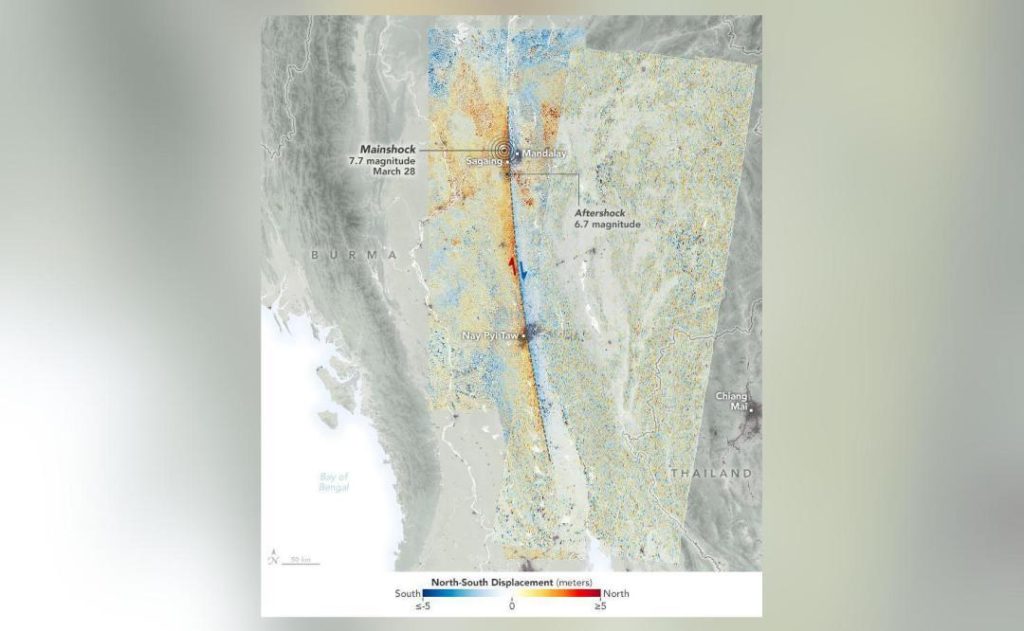
Myanmar Earthquake Moved Ground Up to 20 ft Sideways, Shows Satellite Pic
On February 24, 2021, a devastating 7.7-magnitude earthquake struck Myanmar, claiming the lives of over 3,700 people and causing widespread destruction. The earthquake was a powerful reminder of the destructive power of nature, and its impact was not limited to the immediate destruction it caused. According to NASA, the earthquake also resulted in the sideways displacement of the ground in some areas, with movement of up to 20 feet in some places.
The satellite image provided by NASA offers a glimpse into the extent of the ground displacement caused by the earthquake. The image shows red dots indicating northward motion and blue dots showing southward movement of the ground. The image is a remarkable visual representation of the earthquake’s impact on the region’s geology.
The earthquake is believed to have resulted from strike-slip motion along the Sagaing Fault, which is the interface between the Indian and Eurasian tectonic plates. The Sagaing Fault is a major transform fault that runs for over 600 miles (1,000 km) across Myanmar and is responsible for many large earthquakes in the region.
The satellite image was taken by NASA’s Terra and Aqua satellites, which are equipped with instruments that can detect the subtle changes in the Earth’s surface caused by earthquakes. The image shows the movement of the ground in the days following the earthquake, providing valuable insights into the earthquake’s impact.
The image is a testament to the power of satellite technology in detecting and monitoring natural disasters. In the aftermath of the earthquake, satellite images were used to assess the damage and identify areas of greatest need. The images also helped emergency responders to quickly identify areas where aid was most needed.
The satellite image is also a reminder of the importance of understanding the underlying geology of an area. The Sagaing Fault is a complex system of faults that has been the site of many large earthquakes over the centuries. Understanding the fault’s behavior and the forces that drive it is crucial for predicting and preparing for future earthquakes.
The Myanmar earthquake is a stark reminder of the destructive power of nature and the importance of being prepared for natural disasters. The satellite image provides a powerful visual representation of the earthquake’s impact and serves as a reminder of the importance of understanding the underlying geology of an area.
Conclusion
The 7.7-magnitude earthquake in Myanmar was a devastating event that claimed over 3,700 lives and caused widespread destruction. The satellite image provided by NASA offers a glimpse into the extent of the ground displacement caused by the earthquake, with movement of up to 20 feet in some places. The image is a testament to the power of satellite technology in detecting and monitoring natural disasters and serves as a reminder of the importance of understanding the underlying geology of an area.
Source
https://earthobservatory.nasa.gov/images/154156/satellite-data-show-motion-of-burma-earthquakes






